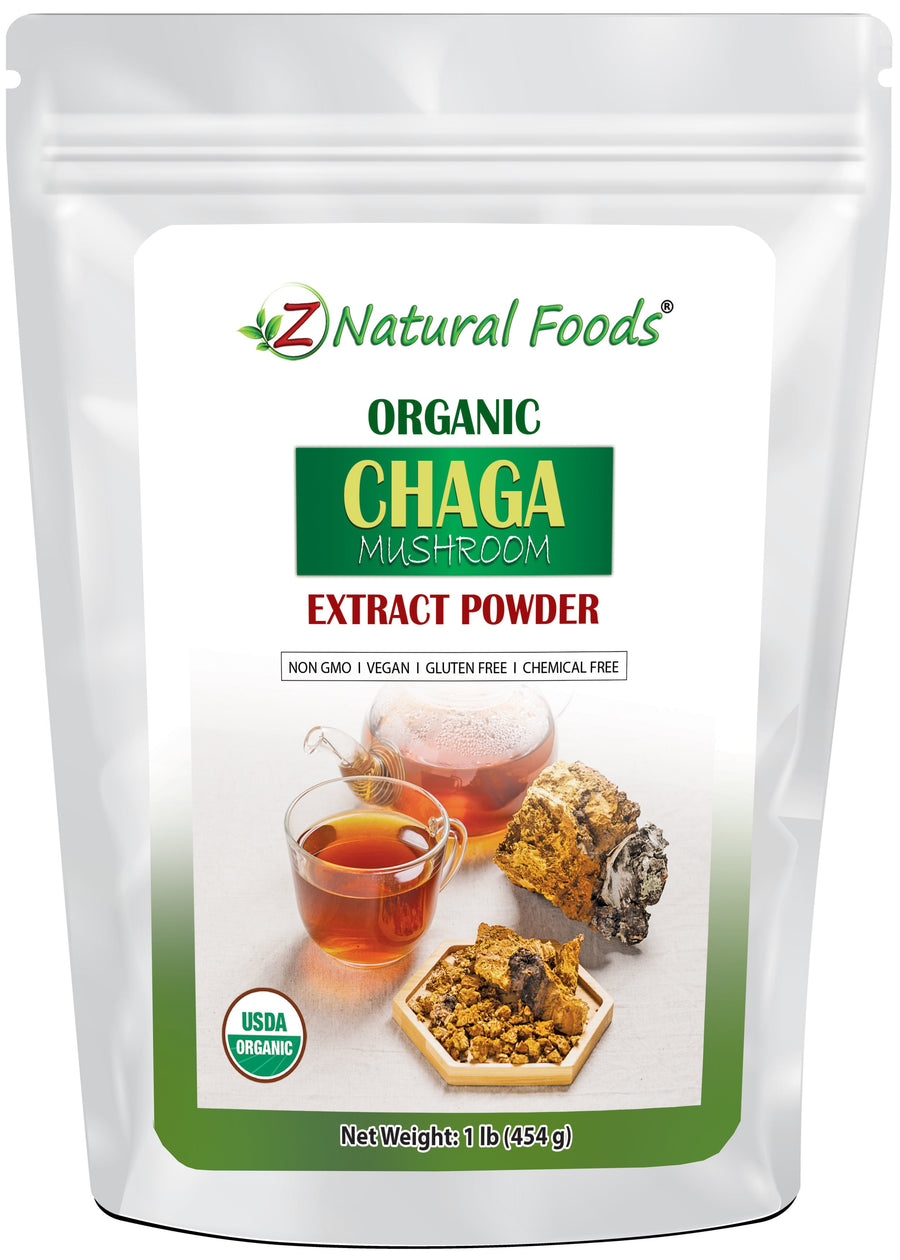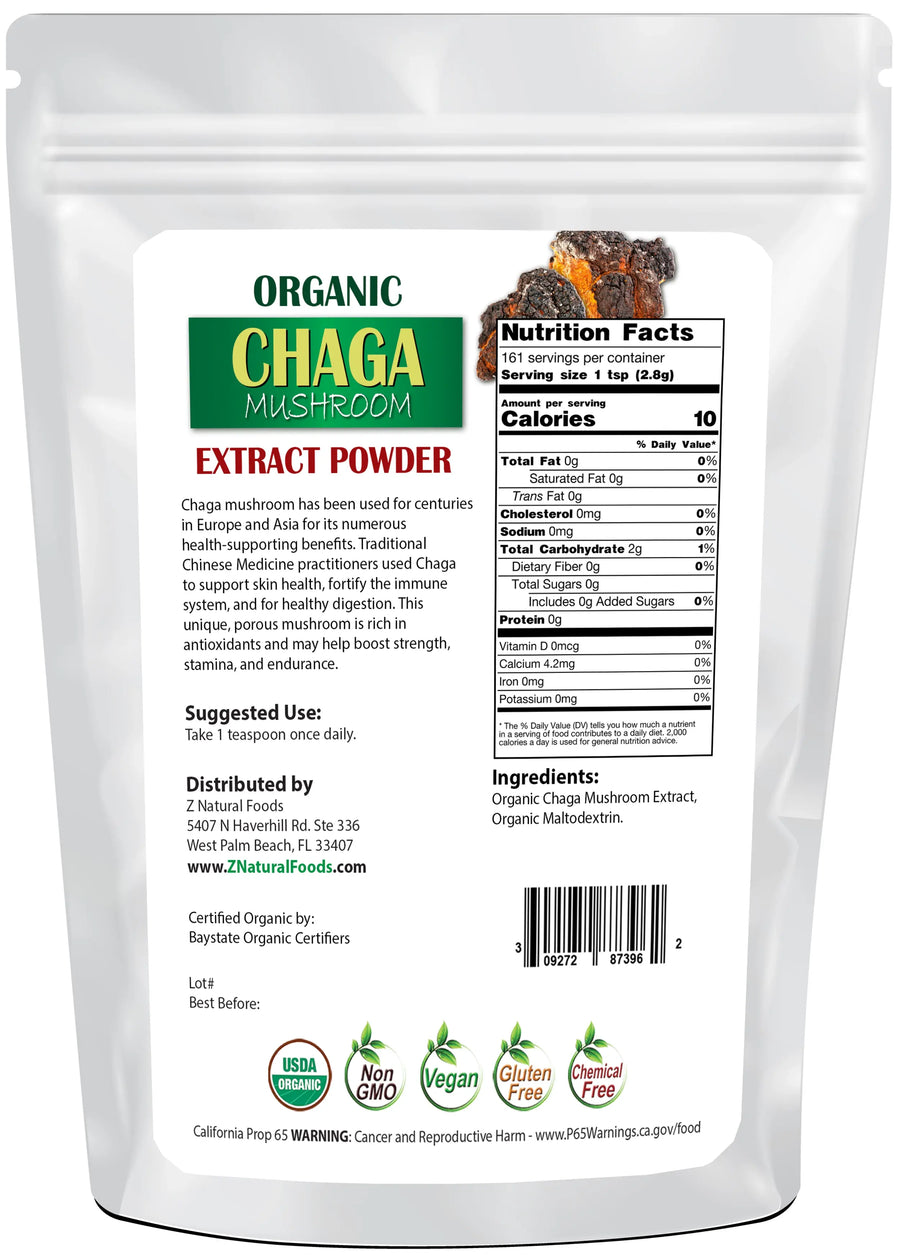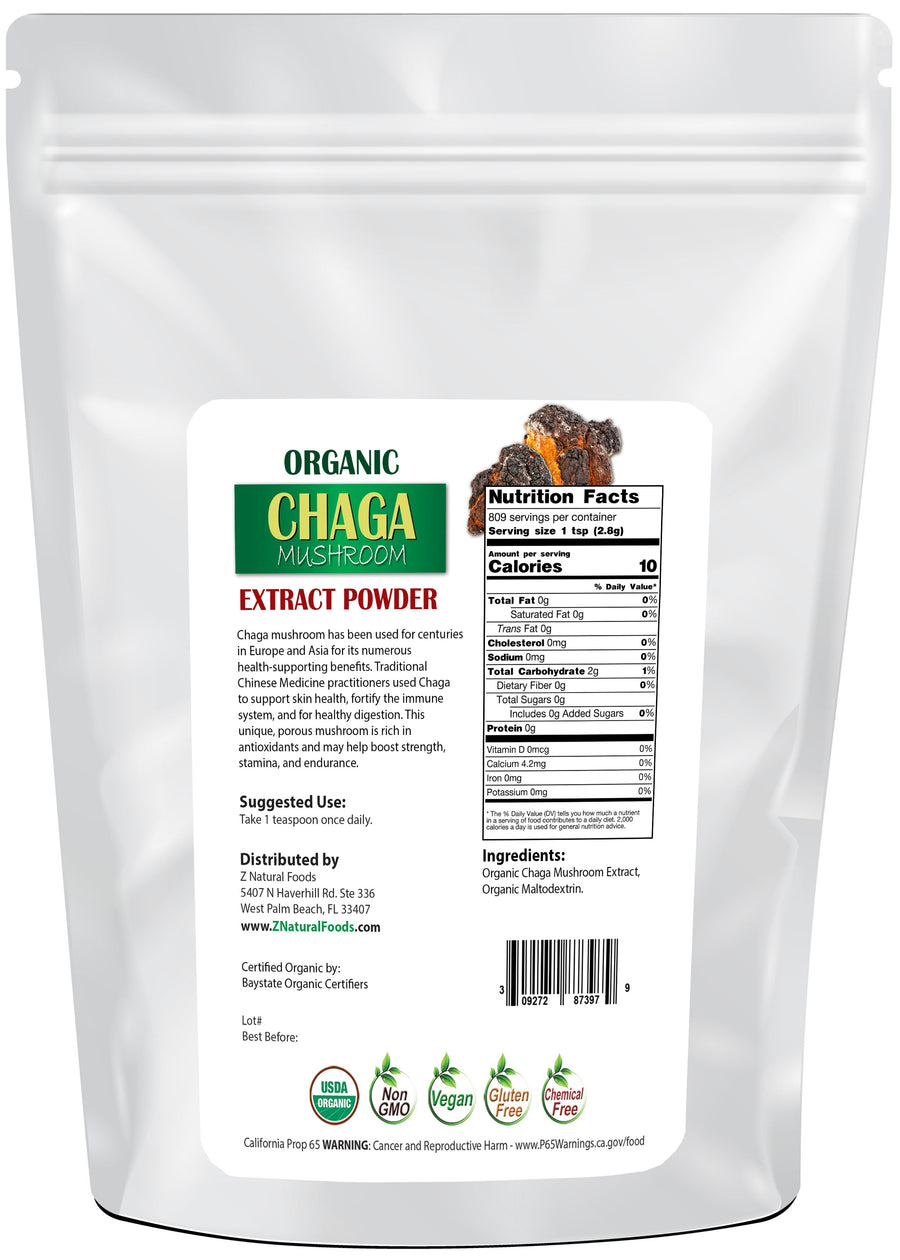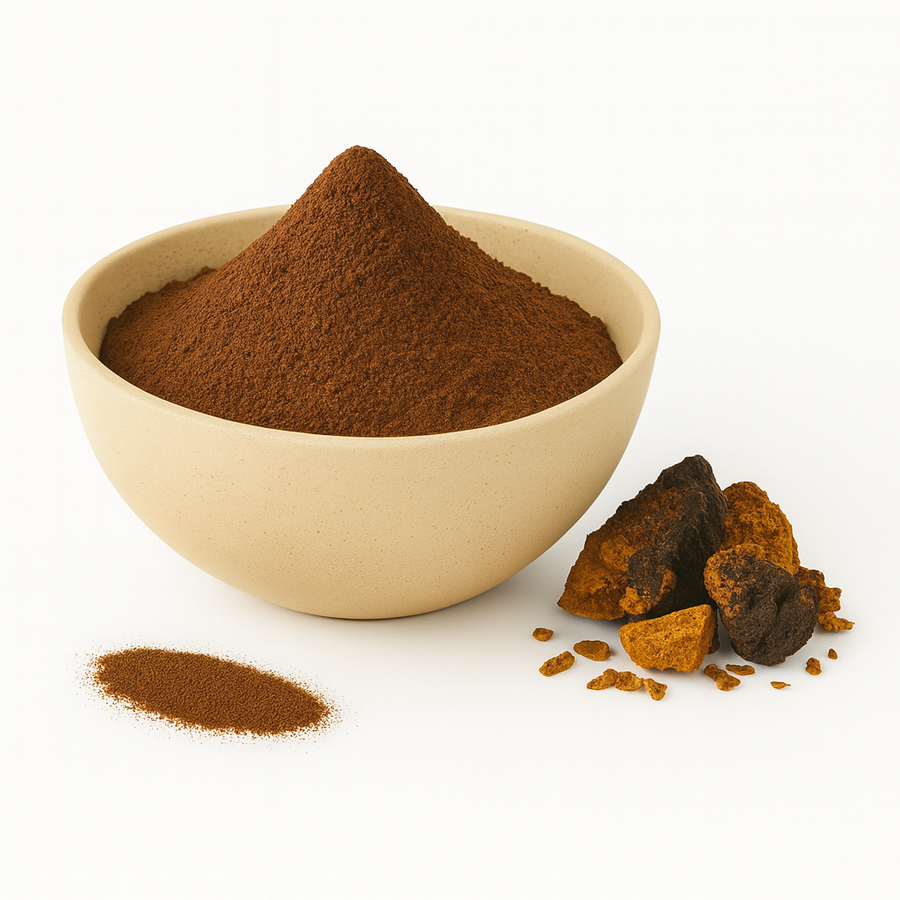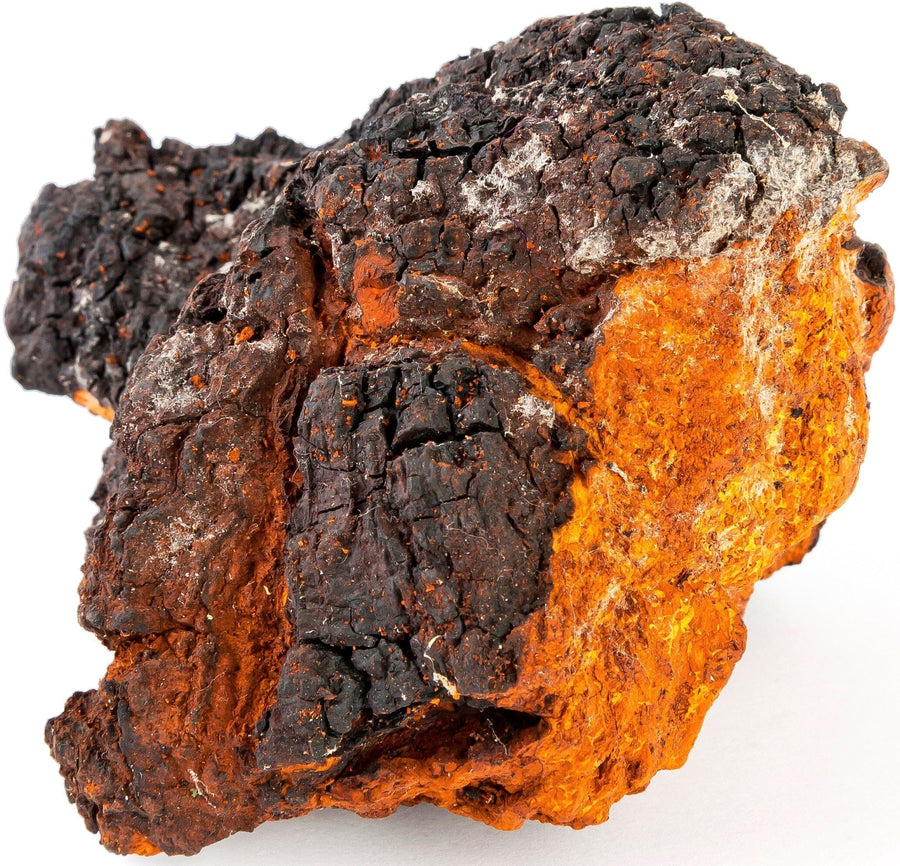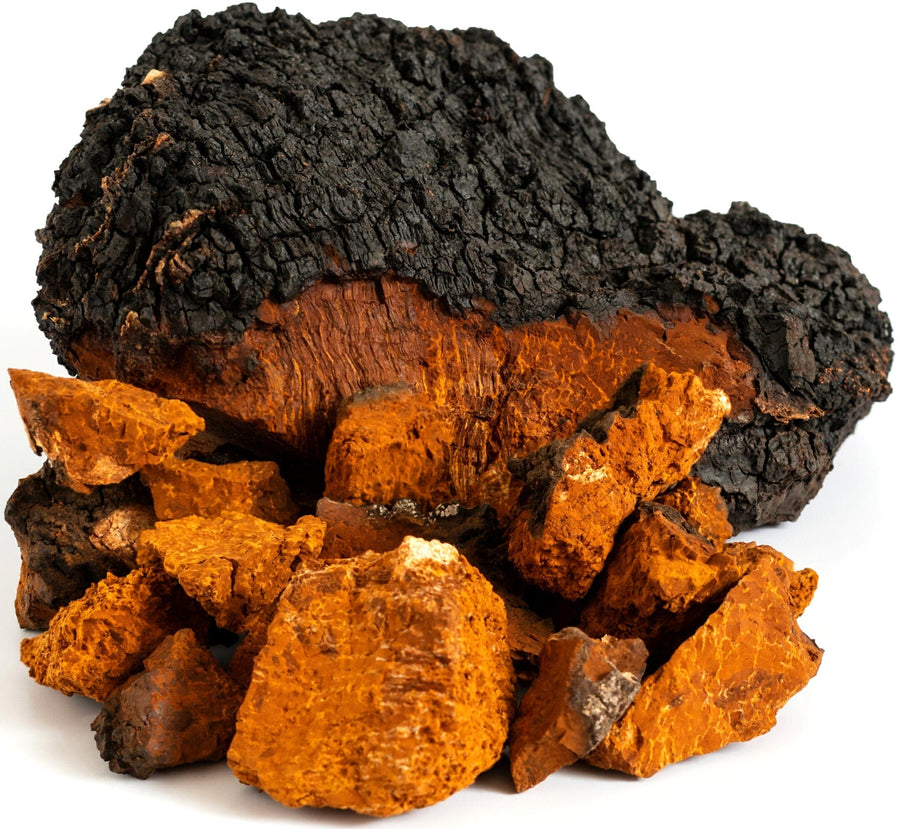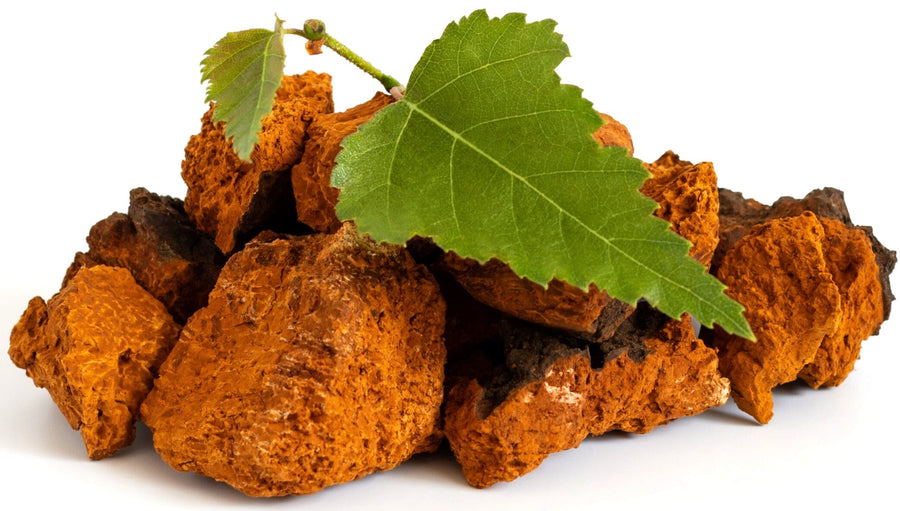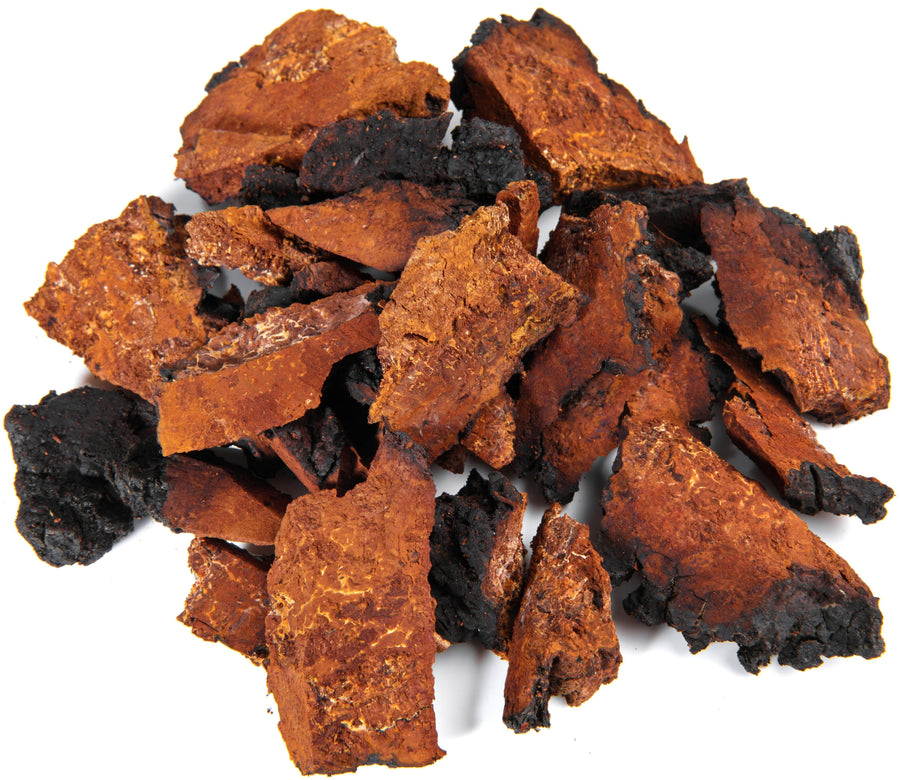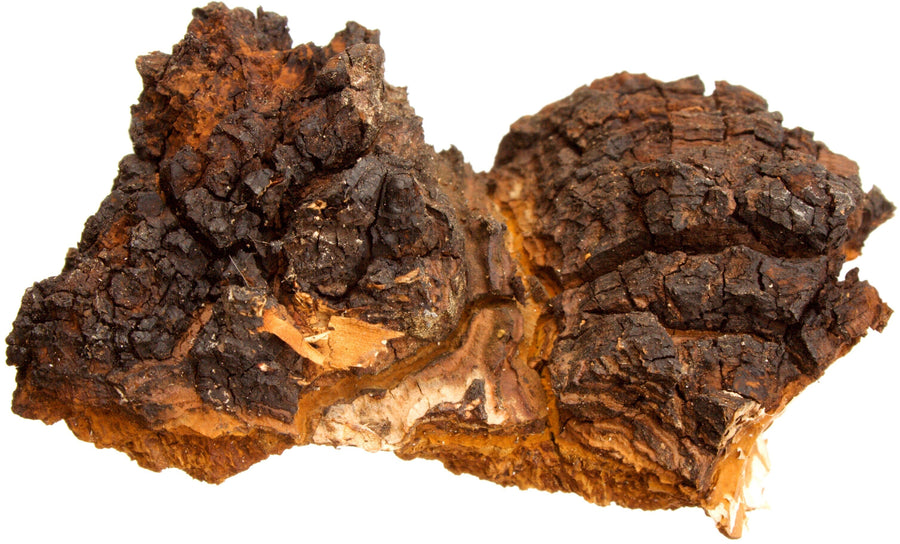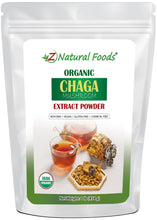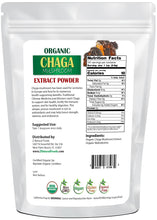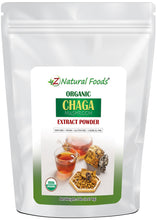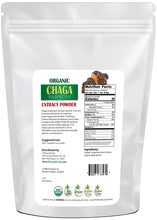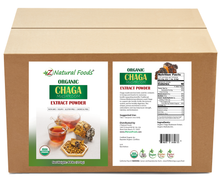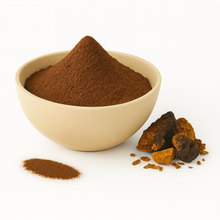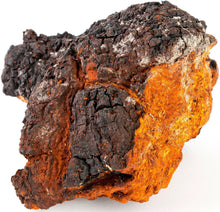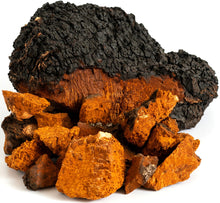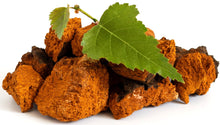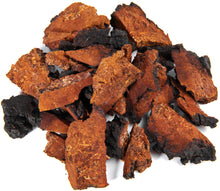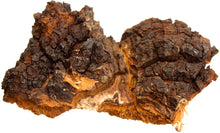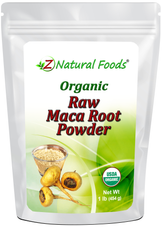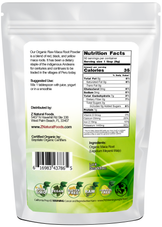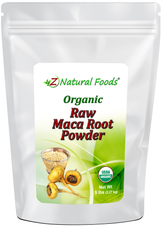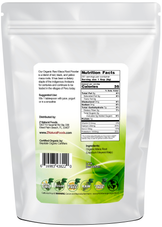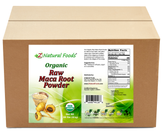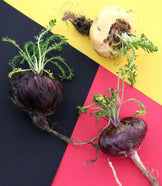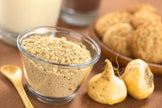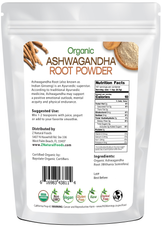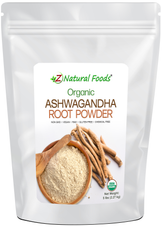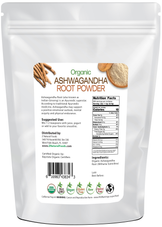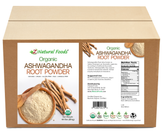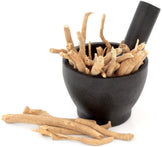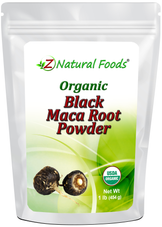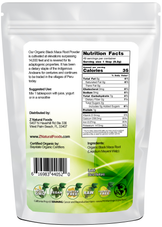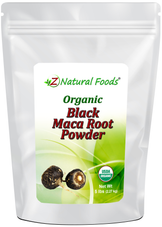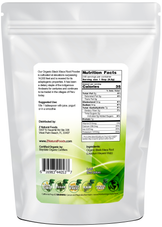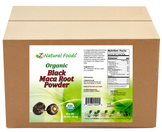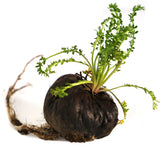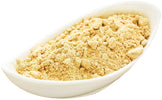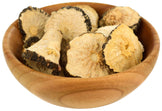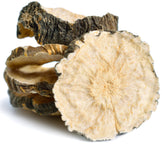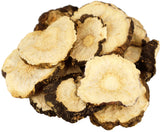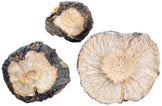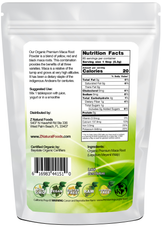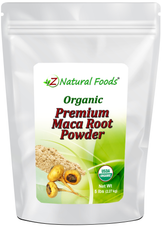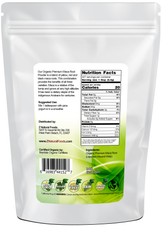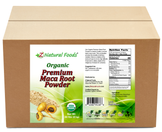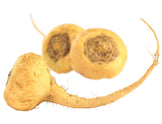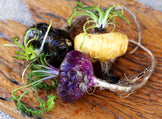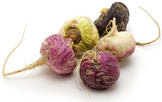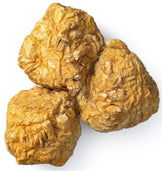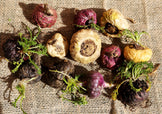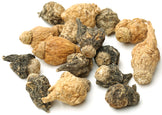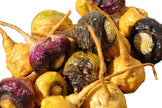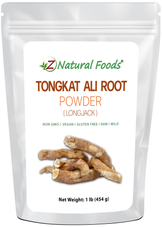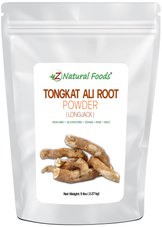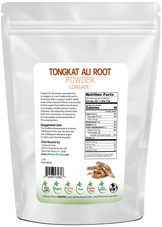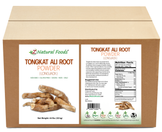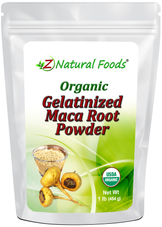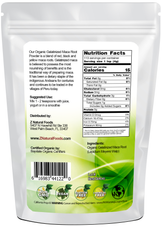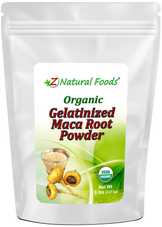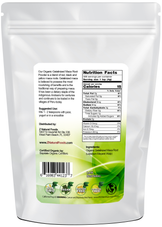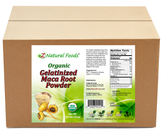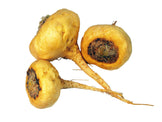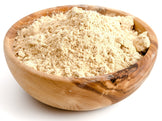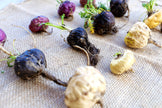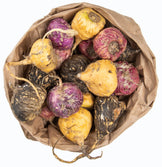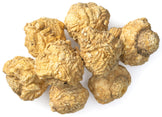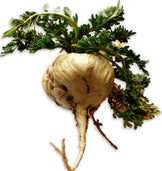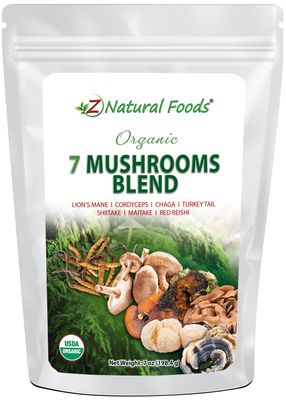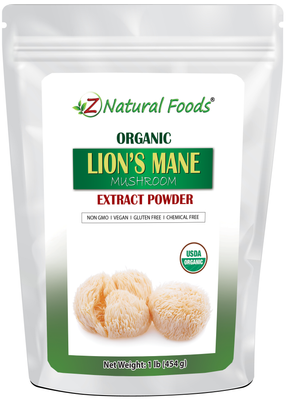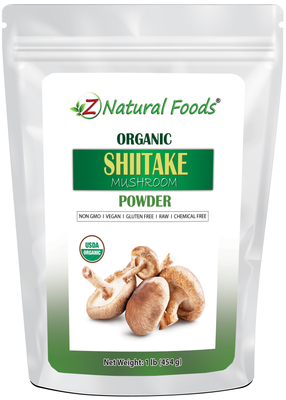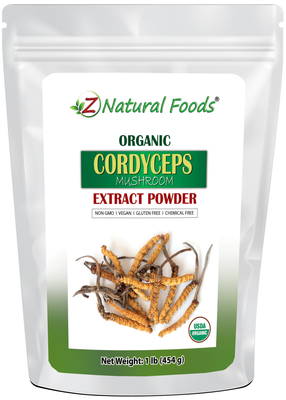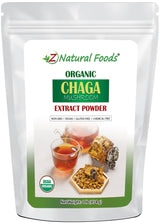About Product
Chaga Mushroom Extract Powder is made from chaga mushrooms that grow naturally on birch trees in cold climates such as Russia, Canada, and Northern Europe. Traditionally brewed as a tea, chaga has been valued for centuries as a unique ingredient in food and drink.
With its earthy flavor and versatile powdered form, chaga mushroom extract powder can be used in teas, smoothies, or other recipes. Convenient and easy to use, it’s a simple way to enjoy the essence of this traditional mushroom.
Some research suggests that Chaga may contain the following constituents:
- Minerals: Magnesium, Phosphorus, Zinc, Copper, Manganese, Selenium, Germanium
- Vitamins: Thiamin, Riboflavin, Niacin, Pantothenic Acid, Beta carotene, Vitamin K
- Phytochemicals: Beta-D-Glucans, Betulinic Acid, Flavonoids, Melanin, Phenols, Polysaccharides, Sterols, Tripeptide, Triterpenoids, Betulin
This product is 100% natural and minimally processed: Taste, smell, texture, and color vary from batch to batch.
Directions to make Chaga Mushroom tea:
Suggested Use for Chaga tea: Steep one teaspoon in 6 ounces of boiling water for 10 minutes, mix one teaspoon with juice and yogurt or add to your favorite smoothie. Take one teaspoon up to 3 times daily.
Other preparations:
Decoction: Use the ratio of 1 tablespoon of herb for every 10 ounces of water. Put all ingredients into a pot and bring to a boil. Once boiling, cover & lower to a simmer for 20-30 minutes. Turn the heat off and allow the mixture to sit for another 10 minutes. Strain and serve (this method is specific for barks and roots).
Tincture: This method can take 15 to 30 days. You will need three items (a mason jar with a cover, the herb/herbs of your choice, and liquid for extracting). The extracting liquid can be alcohol, alcohol/ water combo, vinegar, or vegetable glycerin. Take the product and fill the jar ¾ full, add the liquid of your choice, and close the jar. Then shake the jar, so everything is well mixed. Give the jar a good 5-minute shake several times a day. After 15 to 30 days, strain and bottle in glass tincture jars.
Mixing suggestion: To increase flavor and nutritional profile, combine with our organic extra-rich cacao powder.
Miscellaneous Facts about our Organic Chaga Mushroom Extract Powder
Certifications: USDA Certified Organic
Ingredients: Chaga Mushroom, Organic Maltodextrin.
Parts Used: Whole, Chaga Mushroom
Botanical Name: Inonotus Obliquus
Other Names: Birch mushroom, Black Birch Touchwood, Cinder conk, Mushroom of Immortality, Clinker polypore, Crooked Schiller-porling
Origin: Grown and Extracted in China. Packaged with care in Florida, USA
How to Maintain Optimum Freshness
- This product is packaged in airtight stand-up, resealable foil pouches for optimum freshness.
- Once opened, push the air out of the pouch before resealing it to preserve maximum potency.
- Keep your powder in a cool, dark, dry place.
This product is 100% natural and minimally processed:
Taste, smell, texture, and color vary from batch to batch. Go here to learn why our products may naturally vary.
The Important Protections we take to Bring you Safe & Nutritious Superfoods:
Please go here to discover the essential steps we take to deliver fresh, quality nutrition.
Bulk Quantities?
Need to order a large quantity of our products? We'd be happy to help! Please get in touch with our Bulk department to discuss the details.
* Product packaging, pictures, and origin may vary.
Sources & References
1. "Inonotus obliquus (Ach. ex Pers.) Pilát 1942". MycoBank. International Mycological Association. Retrieved 2011-10-11.
2. Needham, Arthur (2005-12-16). "Clinker Polypore, Chaga". Retrieved 10 October 2011.
3. Muma, Walter. "True Tinder Fungus". Retrieved 5 December 2012.
4. a b Müllauer, Franziska (2011). Betulinic Acid Induced Tumor Killing.
5. Yogeeswari, Perumal; Dharmarajan, Sriram (2005). "Betulinic Acid and Its Derivatives: A Review on their Biological Properties". Current Medicinal Chemistry (12): 657"“666.
6. "Abstractverwaltung Congrex". Registration.akm.ch. Retrieved 2012-11-18.
7. Kathleen Blanchard (5 January 2011). "Betulin from birch bark could treat metabolic disorders". EmaxHealth.
8. a b Piaskowski S. - Preliminary studies on the preparation and application of preparations from black birch touchwood in human cases of malignant tumors. Sylwan 105: 5-11, 1957.
9. a b Zheng, W. F.; Liu, T.; Xiang, X. Y.; Gu, Q. (July 2007). "Sterol composition in field-grown and cultured mycelia of Inonotus obliquus". Yao xue xue bao = Acta pharmaceutica Sinica 42 (7): 750"“756. PMID 17882960.
10. Zheng W, Miao K, Liu Y, Zhao Y, Zhang M, Pan S et al. (2010). "Chemical diversity of biologically active metabolites in the sclerotia of Inonotus obliquus and submerged culture strategies for up-regulating their production.". Appl Microbiol Biotechnol 87 (4): 1237"“54. doi:10.1007/s00253-010-2682-4. PMID 20532760.
11. Zheng, W. F. (July 2008). "Phenolic compounds from Inonotus obliquus and their immune-stimulating effects". Mycosystema 27 (4): 574"“581.
12. a b Song, Y.; Hui, J.; Kou, W.; Xin, R.; Jia, F.; Wang, N.; Hu, F.; Zhang, H. et al. (2008). "Identification of Inonotus obliquus and Analysis of Antioxidation and Antitumor Activities of Polysaccharides". Current Microbiology 57 (5): 454"“462. doi:10.1007/s00284-008-9233-6. PMID 18795365.
13. Tzianabos, Arthur O. (2000). "Polysaccharide Immunomodulators as Therapeutic Agents: Structural Aspects and Biologic Function". Clinical Microbiology Reviews 13 (4): 523"“533. doi:10.1128/CMR.13.4.523-533.2000. PMC 88946. PMID 11023954.
14. Chung, Mi Ja; Chung, Cha-Kwon; Jeong, Yoonhwa; Ham, Seung-Shi (June 2010). "Anticancer activity of subfractions containing pure compounds of Chaga mushroom (Inonotus obliquus) extract in human cancer cells and in Balbc/c mice bearing Sarcoma-180 cells". Nutrition Research and Practice 4 (3): 177"“182. doi:10.4162/nrp.2010.4.3.177. PMC 2895696. PMID 20607061.
15. a b Park YM, Won JH, Kim YH, Choi JW, Park HJ, Lee KT (October 2005). "In vivo and in vitro anti-inflammatory and anti-nociceptive effects of the methanol extract of Inonotus obliquus". J Ethnopharmacol 101 (1-3): 120"“8. doi:10.1016/j.jep.2005.04.003. PMID 15905055.
16. a b Kim YO, Park HW, Kim JH, Lee JY, Moon SH, Shin CS (May 2006). "Anti-cancer effect and structural characterization of endo-polysaccharide from cultivated mycelia of Inonotus obliquus". Life Sci. 79 (1): 72"“80. doi:10.1016/j.lfs.2005.12.047. PMID 16458328.
17. Dosychev, E. A.; Bystrova, V. N. (May 1973). "Treatment of psoriasis using "Chaga" fungus preparations". Vestnik dermatologii i venerologii 47 (5): 79"“83. PMID 4755970.
18. a b Paper with background on extraction processes
19. Rhee, S.Y. (2008). "A comparative study of analytical methods for alkali-soluble β-glucan in medicinal mushroom, Chaga (Inonotus obliquus)". LWT - Food Science and Technology 41 (3): 545"“549.
20. Rzymowska J (January 1998). "The effect of aqueous extracts from Inonotus obliquus on the mitotic index and enzyme activities". Boll Chim Farm 137 (1): 13"“5. PMID 9595828.
21. Cui Y, Kim DS, Park KC (January 2005). "Antioxidant effect of Inonotus obliquus". J Ethnopharmacol 96 (1-2): 79"“85. doi:10.1016/j.jep.2004.08.037. PMID 15588653.
22. Kim YO, Han SB, Lee HW, Ahn HJ, Yoon YD, Jung JK, Kim HM, Shin CS (September 2005). "Immuno-stimulating effect of the endo-polysaccharide produced by submerged culture of Inonotus obliquus". Life Sci. 77 (19): 2438"“56. doi:10.1016/j.lfs.2005.02.023. PMID 15970296.
23. Mizuno T. (1999). "Antitumor and hypoglycemic activities of polysaccharides from the sclerotia and mycelia of Inonotus obliquus". International Journal of Medicinal Mushrooms 1 (1): 301"“316.
24. Anonymous. 2004. Cytotoxic effect of Inonotus obliquus composition in HCT-15 human colon and AGS gastric cancer cells. Journal of the Korean Society of Food Science and Nutrition. 33:633-640.
25. Alves, R. E., et al. 2002. Camu camu (Myrciaria dubia Mc Vaugh): a rich natural source of vitamin C. Proc. Interamer. Soc. Trop. Hort. 46:11-13.
26. Ajith, T. A. and K. K. Janardhanan. 2007. Indian medicinal mushrooms as a source of antioxidant and antitumor agents. J. Clin. Biochem. Nutr. 40:157.
27. Babitskaya, V. G,, Scherba, V. V., Ikonnikova, N.V., Bisko, N.A., and N.Y. Mitropoiskaya. 2002. Melanin complex from medicinal mushroom Inonotus obliquus (Pers:Fr.) Pilat (Chaga) (Aphyllophoromycetidae). Int. J. Med. Mushrooms. 4:139-45.
28. Bobek, P., Ozdin, L., and I. Kajaba. 1997. Dose-dependent hypocholesterolemic effect of oyster mushroom (Pleurotus ostreatus) in rats. Physiol Res. 47:327-329.
29. Bobek, P. and S. Galbavy. 1999. Hypocholesteremic and antiatherogenic effect of oyster mushroom (Pleurotus osteratus) in rabbits. Nahrung. 43:339-342.
30. Burczyk, J., Gawron, A. Slotwinska, M., Smietana, B., and K. Terminiska. 1996. Antimitotic activity of aqueous extracts of Inonotus obliquus. Boll. Chim. Farm. 135:306.
31. Chang, S. T. 1999. Global impact edible and medicinal mushrooms on human welfare in the 21st century: non-green evolution. Int. J. Med. Mushr. 1:1-7.
32. Chen, C., Zheng, W., Gao, X., Xiang, X., Sun, D., Wei, J., and C. Chu. 2007. Aqueous extract of Inonotus obliquus (Fr.) pilat (Hymenochaetaceae) significantly inhibits the growth of sarcoma 180 by inducing apoptosis. American Journal of Pharmacology and Toxicology. 2:10-17.
33. Chihara, G., Maeda, Y., Sasaki, T. and F. Fukuoaka. 1969. Inhibition of mouse sarcoma 180 by polysaccharides from Letin us eodes (Berk.) Nature. 222:687.
34. Chorvathova, V., et al. 1993. Effect of oyster fungus on glycemia and cholesterolaemia in rats with insluin-dependent diabetes. Physiol. Res. 42:175-179.
35.Cui, Yo, Kim, D. S., and K. C. Park. 2005. Antioxidant effects of Inonotus Oblique. J. Ethnopharmacol. 96:79-85.
36. de Sa, M. S., et al. 2009. Antimalarial activity of betulinic acid and derivatives in vitro against Plasmodium falciprum and in vivo in P. Berghel-infected mice. Parisitol. Res. Jul;105:275-279.
37. Fulda, S, et al. 1997. Betulinic acid triggers CD95 (APO-1/Fas)- and p53-independent apoptosis via activation of capases in neuroectodermal tumors. Cancer Research. 57:4956.
38. Fulda, S. 2008. Betulinic acid for cancer treatment and prevention. Int. J. Mol. Sci. 9:1096-1107.
39.Fulda, S., Jeremias, I., Pietsch, T. and K. M. Debatin. Betulinic acid: a new chemotherapeutic agent in the treatment of neuroectodermal tumors. Klin Padiatr. 211:319-322.
40.Gu, Y. and S. Gowsala. 2006. Cytotoxic effect of oyster mushroom Pleurotus ostreatus on human androgen-independent prostate cancer PC-3 cells. J. Med. Food. 9:196-204.
41. Ham, S. S., et al. 2003. Antimutagenic and cytotoxic effects of ethanol extract from the Inonotus obliquus. J. Korean Soc. Food Sci. Nutr. 32:1088-94.
42. Hawksworth, D. L. 2001. Mushrooms: the extent of the unexplored potential. Int. J. Med. Mushr. 2:1-9.
43.Hossain, S., et al. 2003. Dietary mushroom (Pleurotus ostreatus) ameliorates atherogenic lipid in hypercholesterolaemic rats. Clin. Exp. Pharmacol. Physiol. 30:470-475.
44. Hyun, K. W., Jeong, S. C., Lee, D. H., Park, J. S., and J. S. Lee. 1996. Isolation and characterization of a novel platelet aggregation inhibitory peptide from the medicinal mushroom, Inonotus obliquus. Boll. Chim. Farm. 135:306-309.
45.In-Kyoung, L., Young-Sook, K., Yoon-Woo, J., Jin-Young, J., and Y. Bong-Suk. 2007. New antioxidant polyphenols from the medicinal mushroom Inonotus obliquus. Bioorganic & Medicinal Chemistry Letters. 17:6678-6681.
46.Jeremias, I., et al. 2004. Cell death induction by betulinic acid, ceramide, and TRAIL in primary glioblastoma multiforme cells. Acta Neurochirurgica. 146:721-729.
47.Kahlos, K., Kangas, L., and R. Hiltunen. 1987. Antitumor activity of some compounds and fractions from an n-hexane extract of Inonotus obliquus in vitro. Acta Pharm. Fennica. 96:33-40.
48.Kharazmi, A. 2008. Laboratory and preclinical studies on the antiinflammatory and anti-oxidant properties of rosehip powder"” identification and characterization of the active component GOPO. Osteoarhritis and Cartilage. 16:55-57.
49. Kim, B. K., Shin, G.G., Jeong, B.S., and J.Y. Cha. 2001. Cholesterol lowering effect of mushrooms powder in hyperlipidemic rats. J. Korean Soc. Food Sci. Nutr. 30:510-515.
50.Kim, Y. O., et al. 2005. Immuno-stimulatory effect of the endopolysaccharide produced by submerged culture of Inonotus obliquus. Life Sci. 77:2438-56.
51.Kim,Y. O., et al. 2006.Anti-cancer effect and structural characterization of endo-polysaccharide from cultivated mycelia of Inonotus obliquus. Life Sci. 79:72-80.
52.Koyama, T., Yeunhwa, G., and T. Akira. 2008. Fungal medicine, Fuscoporia obliqua, as a traditional herbal medicine, in vivo testing and medicinal effects. Asian Biomedicine. 2:459-469.
53.Kraus-Zaki, J. 1957. (In Polish) ACTH jako czynnuk hydrolizujacy kwasy dezoksyrybonukleinowe w zastosowaniu do bada cytoenzymatycznych. Haematologica. 1:48-50.
54.Krauss-Zaki, J. 1962. Correspondence: Digestion of Cell Nucleus by Enzymes. Blood Journal. 19:527.
55.Lindequist, U., Niedermeyer, T. H. J., and W-D Julich. 2005. The pharmacological potential of mushrooms. Institute of Pharmacy, Greifswald, Germany.
56. Lull, C., Wichers, H. J., and H. F. J. Savelkoul. 2005. Antiinflammatory and immunomodulating properties of fungal metabolites (In) Mediators of Inflammation. Hindawi Publishing Corp.
57. McCord, J. M. and I. Fridovich. 1988. Superoxide dismutase: the first twenty years (1968-1988). Free Radic. Biol. Med. 5(5-6):363-369.
58. Mizuno, T., et al. 1999. Antitumor and hypoglycemic activities of polysaccharides from Sclerotia and mycelia of Inonotus obliquus. Int. J. Med. Mushrooms. 1:306.
59. Mizuno, T. 1999. The extraction and development of antitumor-active polysaccharides from medicinal mushrooms in Japan (review). Int. J. Med. Mushr. 1:9-30.
60.Mothana, R. A. A., Awadh, N. A. A., Jansen, R.,Wegner, U., Mentel, R., and U. Lindequist. 2003. Antiviral lanostanoid triterpenes from the fungus Ganoderma pfeifferi BRES Fitoteraia. 74:483-485.
61. Mullauer, F. B., Kessler, J. H., and J. P.Medema. Betulin is a potent antitumor agent that is enhanced by cholesterol. 2009. (by) Laboratory for Experimental Oncology and Radiology, PLoS One; 4(4).
62. Muller, F. L., et al. 2006. Absence of CuZn superoxide dismutase leads to elevated oxidative stress and acceleration of age-dependent skeletal muscle atrophy. Free Radic. Biol. Med. 40:1993-2004.
63. Najafzadeh, M., et al. 2007. Chaga mushroom extract inhibits oxidative DNA damage in lymphocytes of patients. Biofactors. 31:191-200.
64. Nakagawa-Goto, K., Taniguchi, M., Tokuda, H., and K. H. Lee. 2008. Cancer preventive agents 9. Betulinic acid derivatives as potent cancer chemopreventive agents. Bioorg. Med. Chem. Lett. 1;19:3378-3381.
65. Nasar-Abbas, S. M. and A. Kadir Haikman. 2004. Antimicrobial effect of water extract of sumac (Rhus coriaria L.) on the growth of some food borne bacteria, including pathogens. J. Food Micro. 10:1016.
66. Nicolson, G. L., et al. 2000. Diagnosis and integrative treatment of intercelluar bacterial infections in chronic fatigue and fibromyalgia syndromes, GulfWar Illness, and rheumatoid arthritis and other chronic illnesses. Clin. Prac. Alt. Med. 1:92.
67. Nicolson, G. L. 2002. Co-infections in fibromyalgia syndrome, chronic fatigue syndrome, and other chronic illnesses. National Fibromyalgia Partnership"”Fibromyalgia Frontiers. 10:5-9; 27-28.
68. Papas, A. M. (ed). 1999. Anitoxidant Status, Diet, Nutrition, and Health. Boca Raton: CRC Press. Park,Y. M., et al. 2005. In vivo and in vitro anti-inflammatory and antinociceptive effects of the methanol extract of Inonotus obliquus. J. Ethnopharmacol. 101:120-128.
69.Park,Y. M., et al. 2007. In vivo and in vitro anti-inflammatory and antinociceptive effects of the methanol extract of Inonotus obliquus. J. Med. Food. 10:80-90.
70. Rein, E., Kharazmi, A., and K. Winther. 2004. A herbal remedy, Hyben Vital (stand. Powder of Rosa canina fruits) reduces pain and improves general welbeing in patients with osteoarthritis- a double-blind, placebo controlled randomized trial. Phytomedicine. 11:383.
71. Rzymowska, J. 1996. The effect of aqueous extracts from Inonotus obliquus on the mitotic index and enzyme activities. Boll Chim. Farm. 135:306-309.
72.Sarkar, F. H. andY. Li. 2006. Using chemoprevention agents to enhance the efficacy of cancer therapy. Cancer Res. 66:3347.
73. Sawada, N., et al. 2004. Betulinic acid augments the inhibitory effects of vincristine on growth and lung metastasis of B16F10 melanoma cells in mice. British Cancer Journal. 90:1672.
74.Scott, Cyril. 1944. Health, Diet, and Common Sense. London: the Homeopathic Publishing Co.
75. Shin, Y., Tamai, Y., and M. Terazawa. 2000. Chemical constituents of Inonotus obliquus sclerotium. Eurasian Journal of Forest Research. 1:43-50.
76. Shivrina, A.N. 1967. Chemical characteristics of compounds extracted from Inonotus obliquus. Chem. Abstr. 66:17271-17279.
77. Sudhakar, C., Sabitha, P., Shashi, K. R. and S. Safe. 2007. Betulinic acid inhibits prostate cancer growth through inhibition of specificity protein transcription factors. Cancer Research. 67:2816.
78. Sung, B., et al. 2008. Identification of a novel blocker of lkappaBalpha kinase activation that enhances apoptosis and inhibits proliferation and invasion by suppressing nuclear factor-kappaB. Mol. Cancer Ther. 7:19-201.
79. Takada, Y. and B. B. Aggarawal. 2003. Betulinic acid suppresses carcinogen-induced NF-kB activation through inhibition of lkappaB alpha kinase and p65 phosphorylation: abrogation of cyclooxygenase-2 and matrix metalloprotease-9. Journal of Immunology. 171:3278.
80. Wang, H., Gao, J., and T. B. Ng. 2000. A new lectin with highly potent antihepatoma and antisarcoma activities from the oyster mushroom Pleurotus ostreatus. Biochem. Biophys. Res. Commun. 275:810-816.
81. Wick, W., Grimmel, C., Wagenknecht, B., Dichgans, J. and M. Weller. 1999. Betulinic acid-induced apoptosis in glioma cells: A sequential requirement for new protein synthesis, formation of reaction oxygen species, and caspase processing. J. Pharmacol. Exp. Ther. 289:1306- 1312.
82. Willmann, M. et al. 2009. Characterization of NVX-207, a novel betulinic acid-derived anti-cancer compound. Eur. J. Clin. Invest. 39:384.
83. Winther, K., Apel, K. and G. Thamsborg. 2005. A powder made from seeds and shells of a rose-hip subspecies (Rosa canina) reduces symptoms of knew and hip osteoarhritis: A randomized, double-blind placebo controlled trial. Scand J. Rheumatol. 34:302.
84. Yesilada, E., et al. 1997. Inhibitory effects of Turkish folk remedies on inflammatory cytokin: interleukin-1 alpha, interleukin-1 beta, and tumor necrosis factor alpha. J. Ethnopharmacol. 58:59-73.
85. Ying-Mee, T., Yu, Rong, and J. M. Pezzuto. 2003. Betulinic acidinduced programmed cell death in human melanoma cells involves mitogen-activated protein kinase activation. Clinical Cancer Research. 9:2866.
86. https://emergenthealth.wordpress.com/2013/01/09/chaga-mushroom-introduction-and-active-ingredients/
* Reviews & Success Stories Disclaimer
Product reviews solely reflect the views and opinions expressed by the contributors and not those of Z Natural Foods. Z Natural Foods does not verify or endorse any claims made in these reviews. Statements have not been evaluated by the FDA and are not intended to diagnose, treat, cure, or prevent any disease or health condition.REFERRAL PROGRAM
Share your personal link to your friends and welcome them with rewards. Claim yours when they make their first purchase.

GIVE
$10 off discount

GET
$10 off discount
